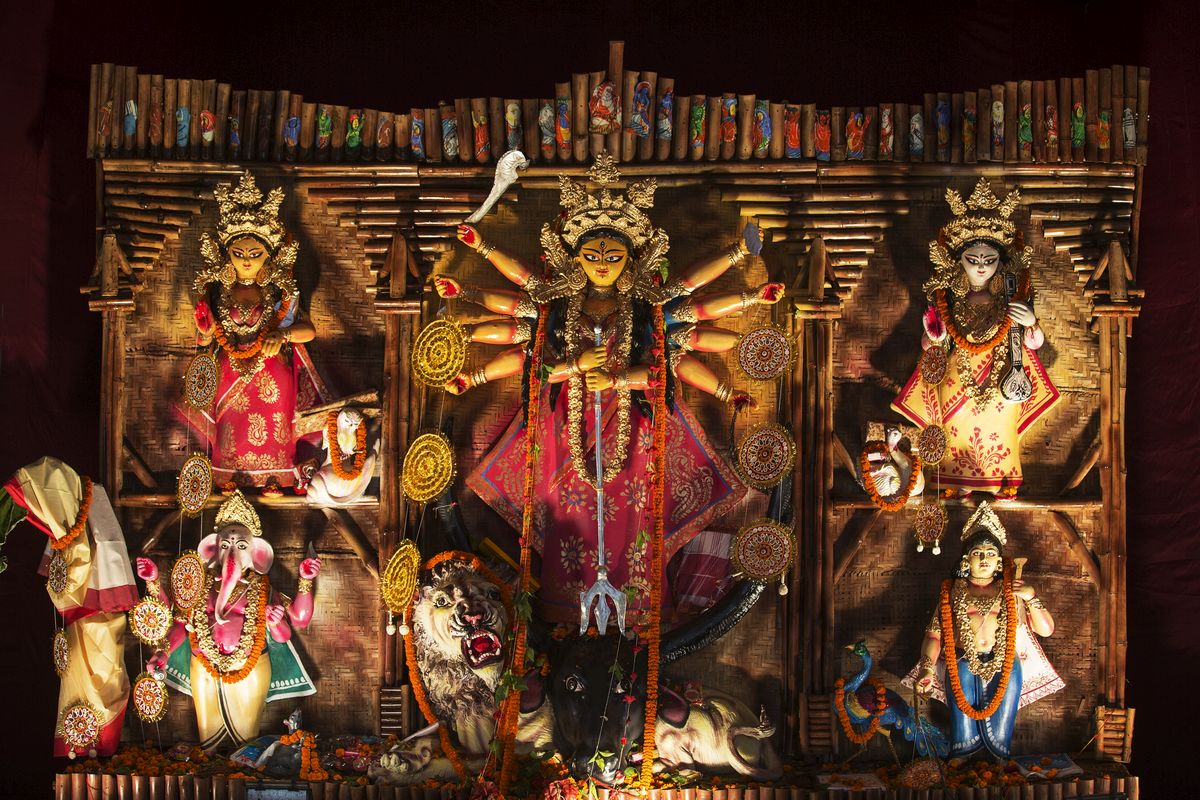Dussehra and Diwali: Is there a connection?
Dussehra symbolises the trimph of Lord Ram over the demon king Ravana. Find out how it is connected to the festival of lights, Diwali.
The nine holy nights (Nav Ratri) of the festival commemorate the nine incarnations of Goddess Durga

( Representational Photo: Getty Images)
Navratri 2019 begins on Sunday, 29th September and ends on Monday, 10th of October. The nine-day festival is celebrated to commemorate Maa Durga’s win over the demon Mahishasura and represents the victory of peace and dharma over ego and evil.
Navratri is dedicated to the nine forms of the Goddess – Shailaputri, Brahmacharini, Chandraghanta, Kushmanda, Skandamata, Katyayani, Kalratri, Mahagauri and Siddhidatri. The festival is celebrated with a fervour which is rather rare on any other festival of the country as during these nine holy days, people observe fasting in a celebratory mood. Each day during this nine-day festival is special and stands for a particular incarnation of Goddess Durga. The day is made special by wearing clothes of the corresponding colour and offering some special fruits and flowers liked by the incarnation of that day.
Advertisement
Here are the nine incarnations of Maa Shakti that are worshipped during Navratri:
Advertisement
Shailaputri: The incarnation of Goddess Parvati represents the collective power of Brahma, Vishnu and Mahesh. Red is her favourite colour. Her two hands display a trident and a lotus. She is mounted upon a bull. Shailaputri is worshipped on the first day of navratri.
Brahmacharini: This is the one who endows grace and prosperity and also helps to attain moksha. Royal blue is the recommended colour to be worn on the second day of Navratri on which Devi Brahmacharini is worshipped. one of her hand holds a ‘Kumbha’ and the other ‘rosary’. Rudraksha is her most adorned ornament.
Chandraghanta: Chandraghanta is the symbol of beauty and bravery. She represents grace and tranquillity. The colour which should be worn on the third day of Navratri is yellow. The Devi possesses 10 hands and three eyes. Eight of her hands display weapons while the remaining two are respectively in the mudras of gestures of boon giving and stopping harm.
Kushmanda: This incarnation is believed to endow the world with greenery and vegetation. She is the symbol of life. Hence the colour that goes with this day is green. The Goddess possesses eight arms, holding weapons and a rosary. Her mount is a tiger and she emanates a solar like aura. The abode of Maa Kushmanda is in Bhima Parvat.
Skandamata: Skandamata is the mother of Karthikeya also known as ‘Skanda’. She carried him in her womb when she was chosen as the commander by the gods in their fight against the demons. This day’s colour is grey because Skandamata can turn any harm that comes near her child into a thunderstorm just like the colour grey. She uses the lion as her vehicle and holds her son ‘Skanda’ in her lap while displaying three eyes and four hands, two hands holding lotuses and the remaining two displaying defending and granting gestures respectively.
Katyayani: This avatar of Goddess Durga was the daughter of the sage ‘Kata’. She was very courageous. Orange is the pious colour of this day. This Shakti is seen sitting on a lion with three eyes and four arms. One left-hand holds a weapon and the other a lotus. The other two hands display defending and granting gestures respectively.
Kalratri: This is the incarnation of Goddess Kali and thus the most powerful of all the avatars of Maa Shakti. She is the fiercest form of Maa Durga. She is dark coloured, has three eyes and her posture bespeaks power. She fights for peace. So the colour of her clothes is white. Hence devotees also wear white on this day. She is mounted upon a donkey. With bountiful hair and four hands, two clutching a cleaver and a torch, while the remaining two are in the mudras of giving and protecting, she is the destroyer of darkness. Her famous shrine is in Calcutta.
Maha Gauri: This incarnation of Maa Durga denotes optimism and anticipation so as the colour pink denotes. Thus the colour of this day is pink. Maa Gauri represents intelligence and peace. She holds a drum and a trident and is often depicted riding on a bull. Her pilgrim centre is located near Haridwar.
Siddhidatri: Siddhidatri represents a motherly figure and is endowed with healing powers. She is known to have blessed all gods, goddesses and worshippers with happiness and positivity which are as pure as the blue sky. So this last day of the festivity calls for sky blue colour. Ensconced upon a lotus, with four arms, she possesses 26 different wishes to grant her bhakts. Her famous shrine is in Nanda Parvat in the Himalayas.
During these nine nights and 10 days, sow the seeds of inner renewal and celebrate the tenth day that is commonly referred to as Dussehra as the victory of good over evil that is the victory of Shakti over Mahishasura or Lord Rama over Ravana.
Here is the beginning of autumn which is considered to be important junction of climatic and solar influences. That is why this period is taken as a sacred opportunity to worship the divine. Nav Durga is believed to be the most sacred aspects of Goddess Durga.
Have a blissful Navratri 2019!
Advertisement